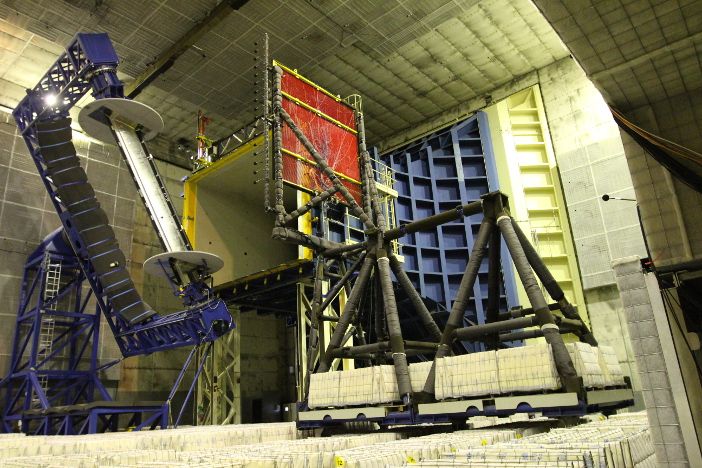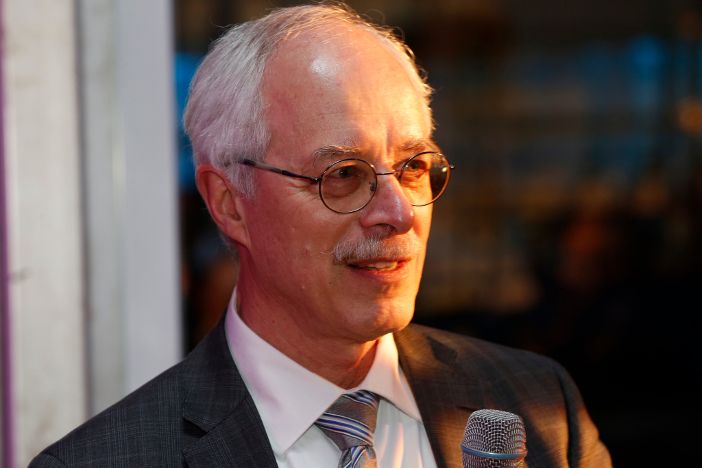In his office Professor Georg Eitelberg is surrounded by models and pictures of the aircraft he and his engineers have tested. When we meet, he is about to step down as director of German-Dutch Wind Tunnels (Deutsch-Niederländische Windkanäle, DNW), a position he has held for 20 years, to take up a part-time professorship at the Delft University of Technology. The career change finds the industry veteran in a reflective mood. He is proud of the past achievements that surround him and sanguine about the future of aeronautical testing.
Consolidation
Marknesse, 31 miles (50km) northeast of Amsterdam, is DNW’s largest test site and features the biggest low-speed wind tunnel in Europe, the 9.5m-wide (31ft) large low-speed facility (LLF). It was built almost 40 years ago and has been used to test dozens of aircraft. However, the number of staff working at Marknesse has steadily decreased over the last 20 years, from a peak of around 150 to its current level of around 100.
“There has been a reduction in staff because of a continual drive for efficiency and the consolidation in the aeronautical industry,” says Eitelberg. “The industry is so successful, there are practically only two companies left in the world, Airbus and Boeing, both with full order books for the next 10 years. They are not in need of innovation and we’ve noticed that the industrial development part of our business is getting weaker.”
The paucity of innovation Eitelberg perceives in aeronautics saddens him. “I think the fascination for aeronautical engineering for most people lies in seeing different configurations flying with different properties,” he says. “Flight is still a fascinating area, but when you see the umpteenth version of an A320 or
a Boeing 737, you realize that we have a mature product that doesn’t need to be significantly changed.”
He also believes the concentration of money in the duopoly restricts innovation. “Around 90% of the aeronautical industry’s turnover is with Boeing and Airbus. There are smaller firms, but they cannot justify the complicated testing procedures we offer on the basis of their product range. The work is so concentrated, I don’t know when the next innovation push will be.”
Performance criteria
DNW manages 10 wind tunnels in Germany and the Netherlands, where the testing carried out can be split into two types. Research work is done mainly by academics and is mostly early-stage blue-sky R&D. Industrial development testing is performed later in a project, mainly by engineers at aerospace companies.
Academics use the wind tunnels to research issues around flight and aerodynamics. “We are still trying to
help researchers understand phenomena like sound generation, drag reduction, control and stability, separation, transition and laminar wings,” Eitelberg says. On the industrial development side the focus is on mitigating risk.
“We test the extremes of flight conditions for aircraft manufacturers’ latest designs using models. If the design doesn’t work in terms of stability control, for example, they know they have a problem,” he says.
“The amount of data we can produce makes the models very elaborate. We can provide 1,500 pressure points on a model and then the acoustic data, because we can accommodate models with a 6m span instead of the 2ft [0.6m] span models used in university tunnels.
The most expensive model ever in the LLF was worth €3m (US$3.5m) and was made for Northrop Grumman.

Upgrades and expertise
Acoustics, alongside engine integration testing, are fields where DNW is investing in equipment and facilities. Engineers at the LLF take pride in the tunnel’s acoustic qualities and the fidelity of the aeroacoustic testing they can conduct.
“The interaction between engine and airframe is difficult to quantify and predict. We have made it our specialty to quantify that interaction, by providing the best experimental simulation for landing, approach and take-off.”
To achieve more accurate results in these phases of flight, the LLF’s floor has a rolling road that moves with the air. DNW has also invested in areas such as engine simulators, which can be installed in the tunnel.
Shifting public opinion, particularly on environmental issues, is a major consideration for decisions about upgrades to wind tunnels. Although the organization’s guiding principle is to provide what the industry wants, the decisions of aviation companies can be greatly influenced by short-term business and marketing concerns. An awareness of public opinion can often provide a more accurate guide as to how the industry will develop. “Public opinion is not like engineering analysis,” says Eitelberg. “Engineers are most concerned with the cruise phase of flight. The public is concerned with noise and emissions
at airports. So we’ve concentrated on maintaining and developing our acoustic testing and engine integration testing capabilities.”
According to Eitelberg, improvements to the environmental performance of aircraft are gradually being made and aircraft manufacturers are being pushed in this direction. “Aircraft are getting quieter and emissions are reducing. But I don’t think we’ll see any bigger aircraft now.”
The most attention from the public the LLF has ever received was during the tests for the Joint Strike Fighter’s STOVL variant in the early 2000s. Eitelberg says, “It was quite controversial at the time, with different countries debating whether to be involved in the program. We provided the customer with good data about the aircraft’s performance.
Eitelberg says that, personally, he has enjoyed working on the projects that have tested propeller aircraft. “Most propeller aircraft are underrated. They are more efficient than jet engines especially on the majority of routes that are shorter than two hours – that’s 80% of flights worldwide. Forty-eight of the most frequently used routes in the world are shorter than two hours in the air.”
“I’m not an economist; I’m an engineer. But with the predicted continued growth in mobility and air travel, someone is eventually going to realize that we can do 80% of it more efficiently, with less fuel burned, by using aircraft with propellers.”
Electric aircraft will not make much difference to DNW’s simulation of flight using wind tunnels, but the organization is monitoring the development of the technology alongside propeller aircraft
as a commercial proposition. “Although the power density of batteries and performance of electrical motors is improving, I think that electrical flight will remain a niche project because of the weight of the batteries,” says Eitelberg. “Biofuels offer the only viable recharging method.”
Data and working practices
Even if there is an increase in electric aircraft being tested at the LLF, the type of aerodynamic measurements made hasn’t changed much. Engineers are examining the same aspects of aircraft, such as noise sources, handling qualities and the interference between propulsion and drag. But IT has changed the way the tests are run. “Our tasks have not changed; the tools have developed,” says Eitelberg.
“The amount of data has increased and the results are available much sooner. No one waits two months for data anymore. They want it and can get it the next day. Also, some acoustic modeling has only become available because of increases in computing power. It takes less time to get the fancy colored pictures, but you still need the knowledge and experience to interpret that data. Maybe in some ways we are very traditional.
“In the future the quality of data will continue to improve in terms of better temporal and spatial resolutions and there will be more image-based data. We can measure the whole surface of the wing and how it bends and twists under loads. Information about the interaction of the wing’s material or shape with airflow can be used to verify design procedures.
“Computing power now means we can identify and quantitatively analyze every pixel. In the future there will be more data and more image-based evaluation, which will improve the design tools. This is the same for all aspects of performance.”
He adds that although aerospace companies are iterating on the same tube and wing configuration of aircraft, he does not discount that there will be a reason to radically change the design of aircraft, which should increase the amount of experimental prediction testing conducted in wind tunnels as opposed to validation testing. “There might be a radical new configuration to verify,” he says. “The engines might go into the fuselage, for example, where there is no history of dependent predictions. Then verification of new designs will once more become important, until we again reach a stable design configuration.” \\





